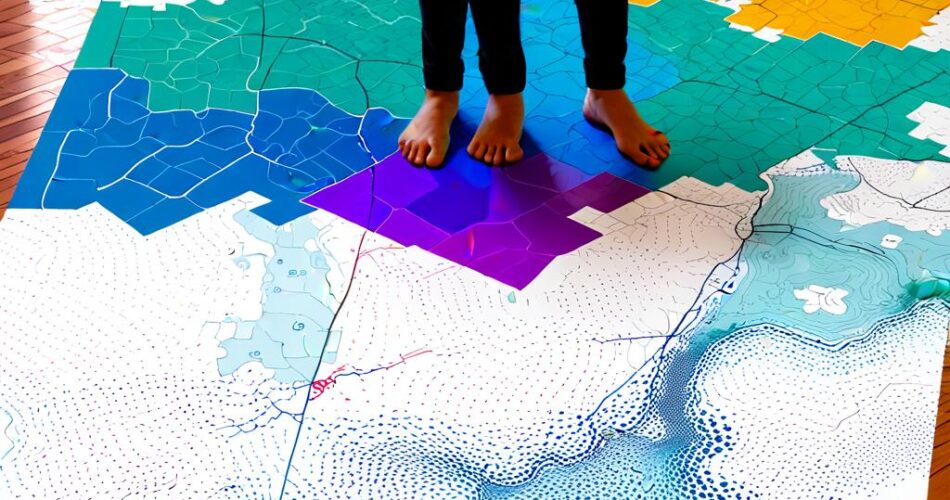In today’s world, navigating complex spaces like offices, airports, or museums can be a daunting task. Interactive floor plans offer a user-friendly solution, providing visual guidance and enhancing the overall user experience. This article explores how to create a basic interactive floor map using the powerful combination of D3.js and TopoJSON.
Introducing D3.js and TopoJSON
D3.js (Data-Driven Documents) is a JavaScript library that allows you to manipulate documents based on data. It excels at creating dynamic, interactive visualizations, making it ideal for building maps. TopoJSON is a file format that efficiently encodes geographical data, minimizing file size and improving performance compared to traditional GeoJSON.
Creating the Floor Plan
1. Data Preparation: Start by obtaining the floor plan data in TopoJSON format. This can be created using software like QGIS or Adobe Illustrator, converting the vector data to TopoJSON.
2. Setting up D3.js: Include the D3.js library in your HTML file and create a container for the map.
“`html
“`
3. Loading the TopoJSON Data: Use D3’s `d3.json` function to load the TopoJSON file.
“`javascript
d3.json(“floorplan.topojson”).then(data => {
// Process the data and create the map
});
“`
4. Projecting the Data: D3 uses projections to transform geographic coordinates into screen coordinates. Choose a suitable projection based on the map’s extent and desired appearance. For example, use the `d3.geoMercator()` projection for a standard map projection.
“`javascript
const projection = d3.geoMercator();
“`
5. Creating the Map: Use D3’s `geoPath()` function to generate paths for each feature in the TopoJSON data.
“`javascript
const path = d3.geoPath().projection(projection);
// Add the map to the container
d3.select(“#map”)
.append(“svg”)
.selectAll(“path”)
.data(data.objects.floorplan.geometries)
.enter()
.append(“path”)
.attr(“d”, path)
.attr(“fill”, “lightgray”)
.attr(“stroke”, “black”)
.attr(“stroke-width”, 1);
“`
Adding Interactivity
1. Adding Markers: Use D3’s `circle()` function to add markers to specific locations on the map.
“`javascript
const markers = [
{ name: “Reception”, coordinates: [100, 200] },
{ name: “Meeting Room”, coordinates: [300, 150] },
];
d3.select(“#map”)
.selectAll(“circle”)
.data(markers)
.enter()
.append(“circle”)
.attr(“cx”, d => projection(d.coordinates)[0])
.attr(“cy”, d => projection(d.coordinates)[1])
.attr(“r”, 5)
.attr(“fill”, “red”);
“`
2. Adding Tooltips: Use D3’s `mouseover` and `mouseout` events to display tooltips with information about the markers.
“`javascript
d3.select(“#map”)
.selectAll(“circle”)
.on(“mouseover”, function(event, d) {
d3.select(this)
.attr(“fill”, “blue”);
const tooltip = d3.select(“#tooltip”)
.style(“left”, `${event.pageX}px`)
.style(“top”, `${event.pageY}px`)
.style(“display”, “block”)
.text(d.name);
})
.on(“mouseout”, function() {
d3.select(this)
.attr(“fill”, “red”);
d3.select(“#tooltip”)
.style(“display”, “none”);
});
“`
Conclusion
By leveraging the power of D3.js and TopoJSON, you can create interactive floor maps that enhance user experience and provide valuable information. This article covered the basics of creating a floor plan and adding interactivity. You can further customize the map by adding more features like zoom functionality, search bars, and navigation controls, making it a powerful tool for navigating complex spaces. With D3.js and TopoJSON, the possibilities are endless.
